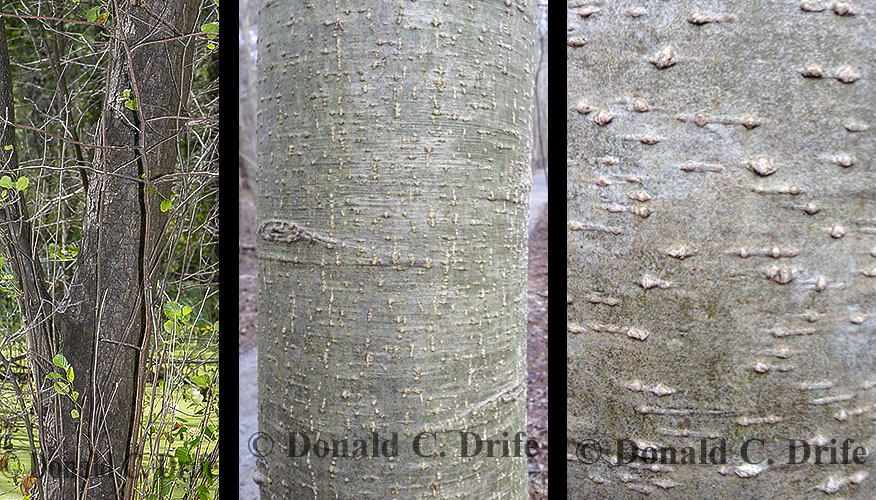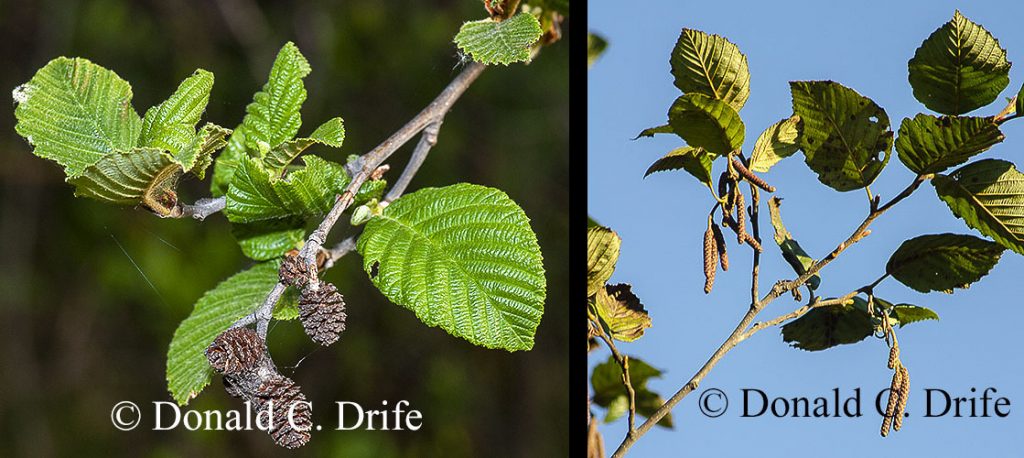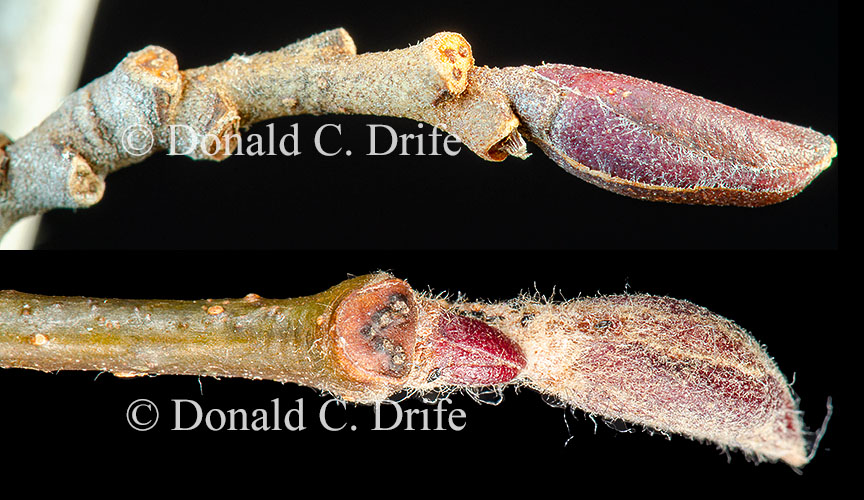Black Alder (Alnus glutinosa) is naturally found in Europe and North Africa. It is planted in Michigan as far north as Baraga Co. so it could spread throughout the state. Currently, it is recorded from the southern half of the Lower Peninsula.


Black Alder is a small tree with usually a single trunk. Its leaves are about as wide as they are long and have a notched tip. They remain green into December in southern Michigan. Dark gray to black bark with squarish plates identify this species. Leaf buds start out green and turn purple in the winter. It is difficult to distinguish this species by bud and twig characters. In the winter I use its growth habit and I look for leaves on the ground.

Speckled Alder (Alnus incana) is normally a multi-stemmed shrub. When it reaches tree size, its bark is tight and gray with large lenticels. Leaves are 1.5 to 2 times longer than wide with acute tips. Leaf buds are dark-reddish brown, and it takes some practice to separate this species from Black Alder using only the twigs. If this species is considered distinct from the European alder, then its scientific name is Alnus rugosa.

Black Alder should be watched for throughout the state. It should be reported wherever you find it at the Midwest Invasive Species Network (MISIN). They also have a free app for reporting observations.
Copyright 2021 by Donald Drife
Webpage Michigan Nature Guy
Follow MichiganNatureGuy on Facebook

Unfortunately there are lots and lots of black alders in the parks along the Huron River in Ann Arbor.
There are wooly aphids that form white fluffy colonies feeding on black alder stems. These aphids are prey for the caterpillars of North America’s only (I think), carnivorous butterfly, called the Harvester, Feniseca tarquinius.
This article was helpful for me trying to distinguish the difference on a property i am working on.
thank you